Diwali is a five-day celebration that takes place in the Hindu lunisolar months of Ashvin and Kartika (mid-October to mid-November). The ancient calendar states that Diwali is celebrated annually on Amavasya or the fifteenth day of the month of Kartik.
Diwali will be celebrated on Friday, November 1, 2024. The festival is also known as the Festival of Lights.
Diwali 2024 Date in India Calendar- दिपावली पर लक्ष्मीजी की विशेष पूजा की जाती है, यह त्योहार सुख समृद्धि का प्रतीक है, जानिए इस साल दिवाली का पर्व कब है?
Friends, Diwali falls in either October or November each year, depending on the cycle of the moon. It's observed on the 15th day of Kartik, the holiest month in the Hindu lunar calendar.
Diwali 2024 dates:
When is Diwali | Deepawali in 2024?
Friday 1st November 2024
Friends who are searching for When is Diwali in 2024: Date, Muhurat, all you need to know? Can find it here as When is Diwali in 2024 in India? We have shared Diwali 2024 dates | When is Deepawali in 2024? details and Deepavali 2024 | When is Diwali 2024? for you here. You will find Diwali 2024: What is Diwali? | Dates and Traditions along with Diwali/Deepavali in India - Time and Date here. We have shared all about Diwali 2024 here. You can find here about Diwali / Deepavali 2024, 2025 and 2026 here. Friends you can also find Diwali 2025 Date in India Calendar and Diwali Date 2026 Tamil along with Diwali Puja 2024 Date here.
Diwali 2024 Date in India Calendar
Deepawali
Day 1
28th
October 2024- Monday / सोमवार
Ekadashi:
Govatsa Dwadashi, Vasu Baras, Panchang for Govatsa Dwadashi Day
Deepawali
Day 2
29th
October 2024- Tuesday / मंगलवार
Dwadashi:
Dhantrayodashi, Dhanteras, Dhanvantari Trayodashi, Yama Deepam, Panchang
for Dhantrayodashi Day
Deepawali
Day 3
30th
October 2024 - Wednesday / बुधवार
Trayodashi:
Kali Chaudas, Hanuman Puja, Panchang for Kali Chaudas Day
Deepawali
Day 4
31st
October 2024 - Thursday / गुरूवार
Chaturdashi:
Narak Chaturdashi, Tamil Deepavali, Kali Puja, Panchang for Narak
Chaturdashi Day
Deepawali
Day 5
1st
November 2024 - Friday / शुक्रवार
Amavasya:
Lakshmi Puja, Diwali, Kedar
Gauri Vrat, Chopda Puja,Sharda Puja, Diwali Snan, Diwali Devpuja
Panchang for
Lakshmi Puja Day
Deepawali
Day 6
2nd
November 2024 - Saturday / शनिवार
Pratipada:
Govardhan Puja, Annakut, Bali Pratipada, Dyuta Krida, Gujarati New
Year, Panchang for Govardhan Puja Day
Deepawali
Day 7
3rd
November 2024 - Sunday / रविवार
Dwitiya:
Bhaiya Dooj, Bhau Beej, Yama Dwitiya, Panchang for Bhaiya Dooj Day
Diwali Dates detailed Information
Light festival Diwali or Dipawali actually runs for five days, with the main event happening on the third day in most places in India. It's associated with Lord Ram's return to his kingdom in Ayodhya after exile and rescuing his wife from demon king Ravan on Dussehra festival. However, in south India, the festival is observed as the defeat of Narakasura. It's a one-day celebration, known as Deepavali, that usually falls a day before the main Diwali date but sometimes occurs on the same day (when the lunar days overlap).
Click here for Diwali Greetings
Diwali Auspicious Timings
This festival isn't celebrated in Kerala though. Goddess Lakshmi, the goddess of good fortune and prosperity, is the primary deity worshiped during Diwali. Each day has a special significance as follows.
What is Diwali? Diwali Celebration
However, in Maharashtra Diwali festivities begin one day earlier on Govatsa Dwadashi while in Gujarat Diwali festivities begin two days earlier on Agyaras and culminates on Labh Panchami.
During five days festivity, various rituals are followed by Indians along with Goddess Lakshmi and several other Gods and Goddesses are worshipped. However Goddess Lakshmi is the most significant deity during Diwali Puja celebration.
The new moon day (अमावस्या का दिन), which is known as Amavasya, is the most significant day of the five days Diwali festivities and known as Lakshmi Puja, Lakshmi-Ganesh Puja and Diwali Puja as well.
Wish You Happy Diwali
We all Indians and other abroad NIRs who celebrate Diwali are in eager to know Diwali Date this year. The Diwali last year Date was very charming and interesting. This Diwali function to be celebrated by checking Diwali Calendar date in which the Diwali will be celebrated. We along with children are ready to welcome Happy Diwali on that Diwali Date we will light lights and eat sweets and many more dishes. We will send Diwali Greeting Card to our near and dears and Diwali Sweets. After Diwali is over we will share Happy Diwali Images with each other. On the day of Diwali we all will be busy up to late night. Some peoples are still asking on various media Diwali Kab Hai and Diwali Date in India also being searched by busiest peoples.
Happy Diwali Images
Happy Diwali Wishes Images
 |
| Happy Diwali Quotes |
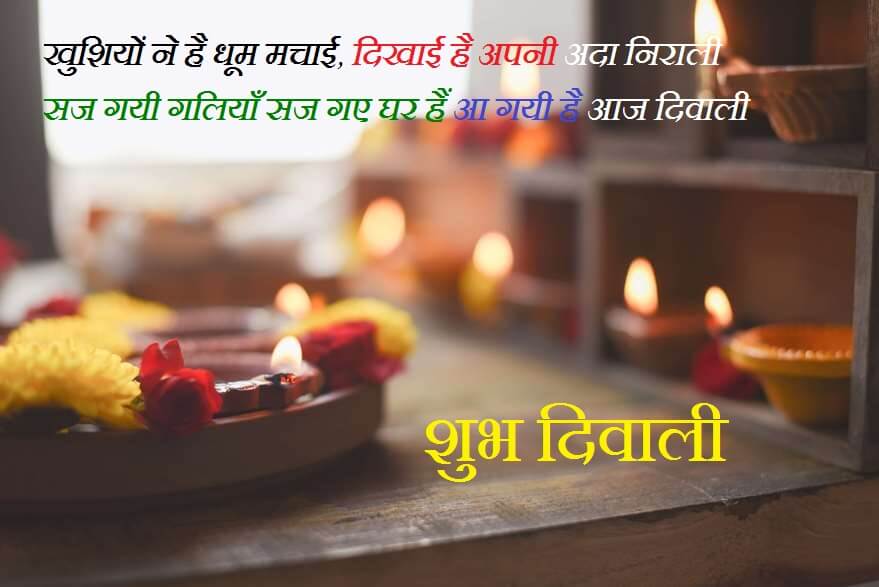 |
| Happy Diwali Wishes in Hindi |
 |
| Happy Diwali Wishes Hindi |
 |
| Happy Diwali Wishes |
Happy Diwali Wishes in English Images
 |
| Beautiful Happy Diwali Images |
 |
| Happy Diwali Quotes in English |
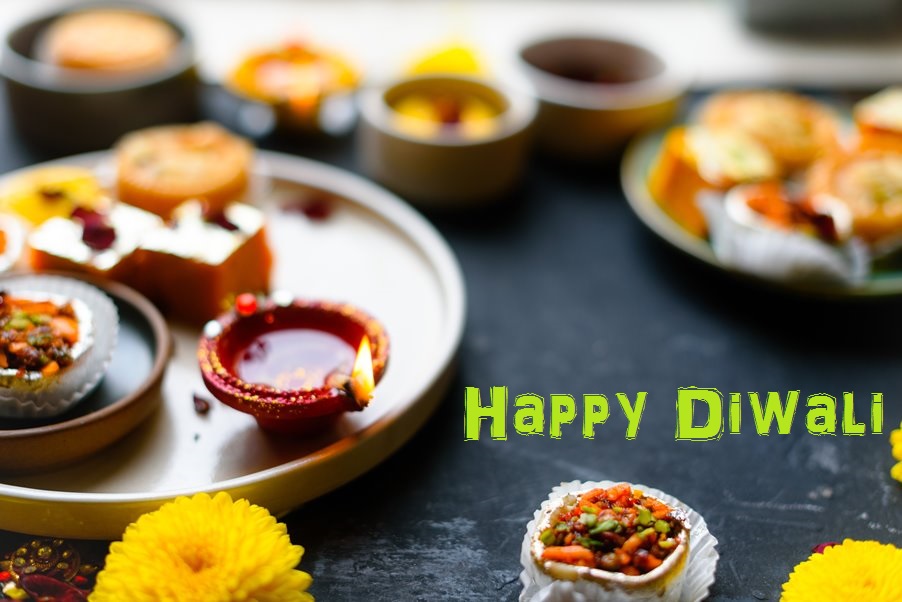 |
| Happy Diwali Quotes |
 |
| Happy Diwali Status |
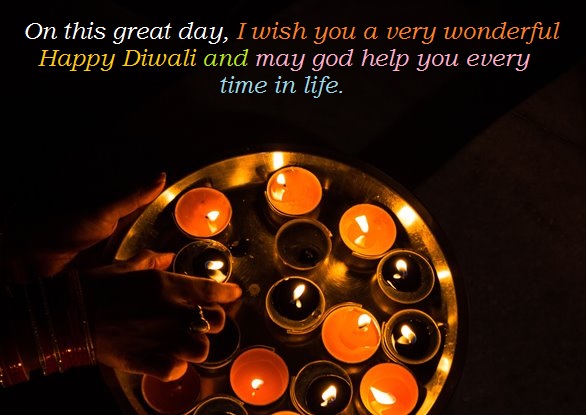 |
| Happy Diwali Wishes in English |
 |
| Happy Diwali Wishes |
Happy Diwali Wishes in Hindi Images
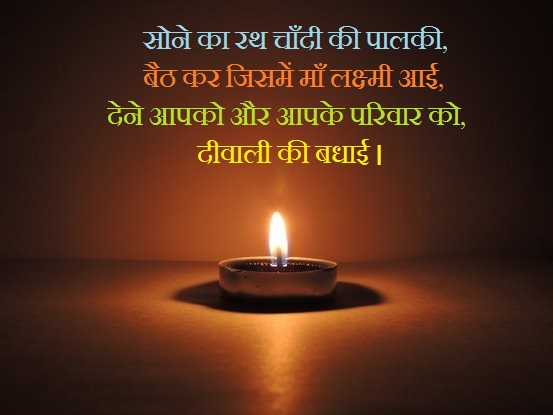 |
| Happy Diwali Wishes in Hindi |
 |
| Happy Diwali in Hindi |
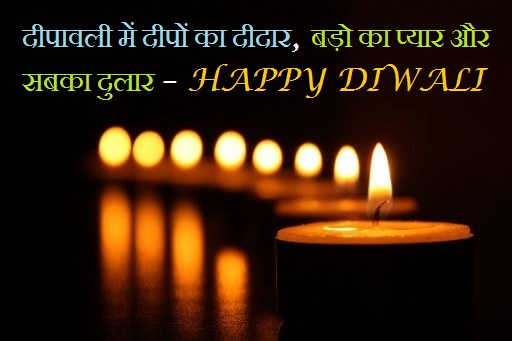 |
| Happy Diwali Quotes in Hindi |
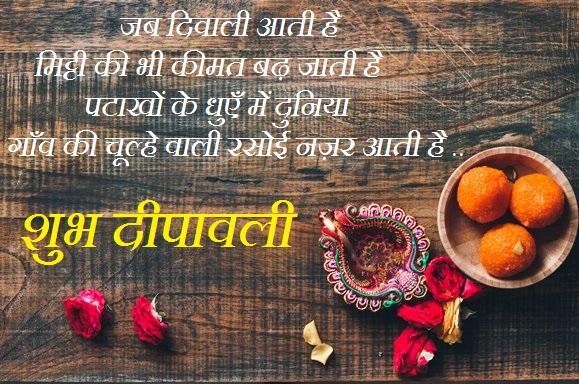 |
| Happy Diwali Shayari |
Happy Diwali Ganesh Images
 |
| Diwali Ganesh |
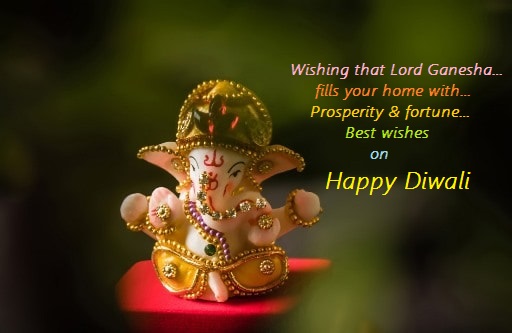 |
| Happy Diwali Ganesh Images |
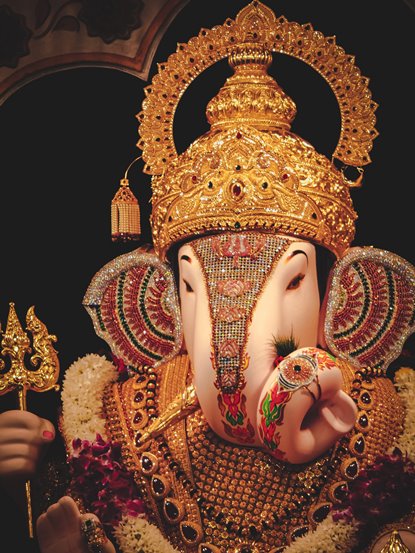 |
| Happy Diwali Ganesh Laxmi |
 |
| Happy Diwali Ganesh |
Happy Diwali Sweets Images
 |
| Diwali Sweets |
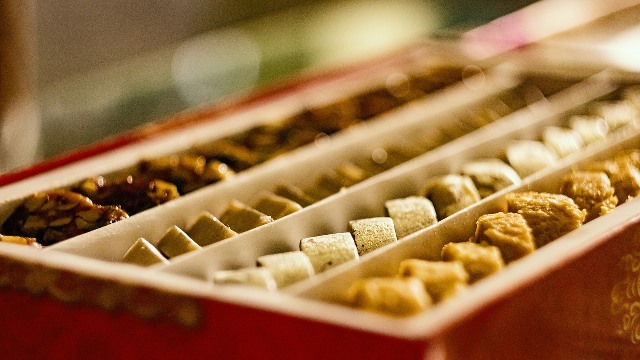 |
| Happy Diwali Sweets Images |
 |
| Happy Diwali Sweets |
Happy Diwali Wallpapers
 |
| Happy Deepawali Wallpapers |
 |
| Happy Diwali Diyas |
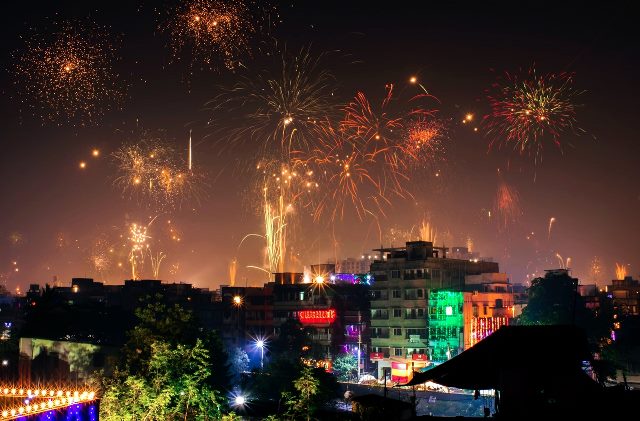 |
| Happy Diwali Photos |
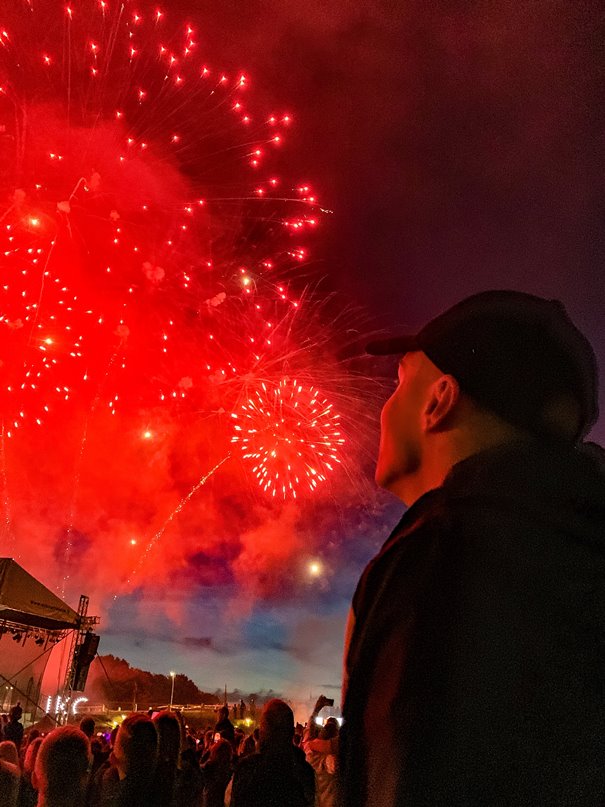 |
| Happy Diwali Images |
Click here for Happy Diwali Wishes Quotes Greetings Online, Messages, SMS, Short Diwali Wishes
How Diwali is celebrated in India?
In India Diwali Puja is worshiped not only in families but also in various offices. Diwali Puja is the significant day for the most traditional Hindu businessmen. On this day, ink bottle, pens and new account books are worshipped.
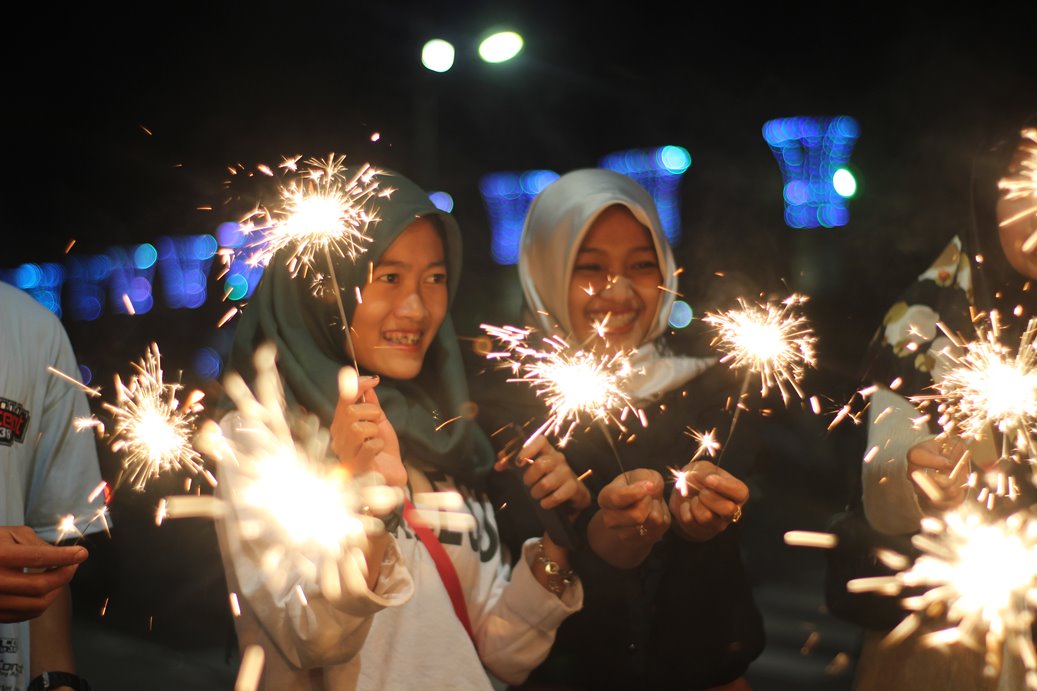 |
| Happy Diwali Celebration |
The most auspicious time to do Diwali Puja is after sunset in India. The time period after sunset is known as Pradosh. The day of Diwali Puja is decided when Amavasya Tithi prevails during Pradosh. Hence no other Diwali Puja Muhurat is as good as Puja Muhurat during Pradosh even if it is available for one Ghati (approximately 24 minutes).
The Diwali the festival of Lights is known as Deepavali (deep - lamp, vali - array). This is the name of the festival in Southern India and is how the festival is referred to in other Asian countries such as Malaysia and Singapore. In Northern India, it is more commonly known as Diwali, but they are celebrating on the same day and with same traditions.
In these countries and for Hindus around the world, the celebration revolves around the triumph of good over evil, purity over impurity, light over darkness. It is one of the most important Hindu festivals in the world.
Why do we Celebrate Diwali?
It is known that Diwali marks the return of Lord Rama, who was the seventh incarnation of Vishnu, from a fourteen year exile to Ayodhya his home.
· The Festival of Lights (Diwali) takes place on the darkest night (first night of the new moon) in the month of Kartik as per the Hindu calendar.
· All Indian streets and temples are decorated with spectacular light displays and colorful garlands.
· In our homes, we light small oil lamps called Diyas. It is believed that deceased relatives come back to visit their families on Earth during this festival and the lights are a way to guide the spirits home. The sound of firecrackers exploding is common as the noise is said to drive away evil spirits.
· Many families, friends and business associates exchange gifts and sweets, settle old business deals and are encouraged to rid themselves of hate, anger and jealousy. The Diwali festival is a time for rejoicing and renewal.
· The Diwali holds significance not only in Hinduism but also in Sikhism who celebrate the release of their sixth Guru (literal translation: teacher) Hargobind. To Sikhs, it is known as Bandi Chhor Divas. The Jains celebrate it as the day when Lord Mahaveer, the last Trithankara, attained Nirvana or Moksha.
Five Days of Diwali celebration
Dhanteras -1st day
Naraka Chaturdashi -2nd day
Diwali -3rd day
Balipadyami- Govardhan Puja – 4th day
Bhai Duj- Bij -5th day
Date of Bhai Duj - Bij?
Traditions of Bhai Duj - Bij
Why do we burn Crackers on Diwali?
Those Indians who want to lit crackers during Diwali 2023 celebration may read all points, how and why to fire Diwali Crackers. At the time of Celebration Diwali 2023 interested personnel may know the tips to enjoy Diwali celebration.
Fireworks on Diwali
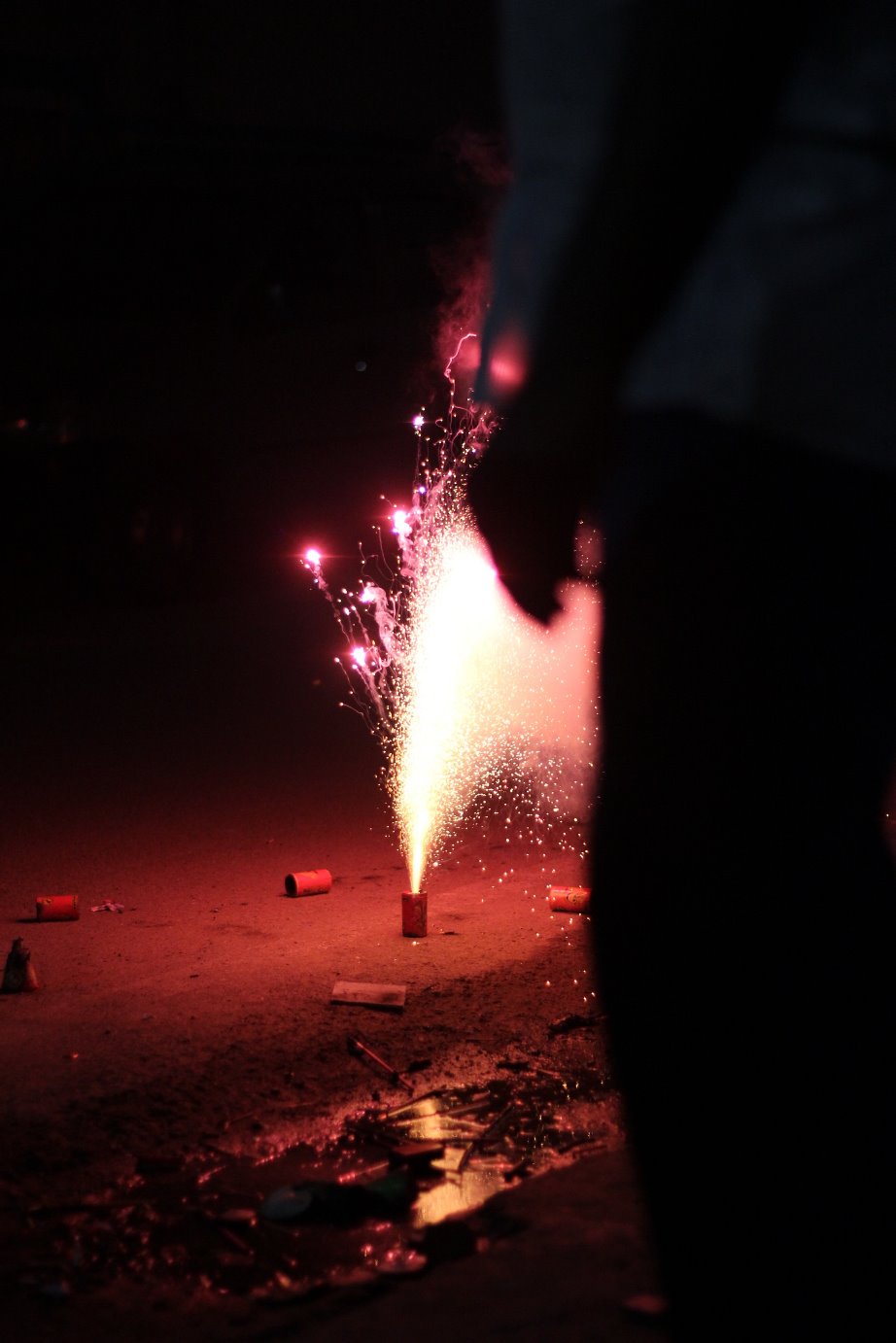 |
| Happy Diwali Crackers |
1- Crackers name to be noted, Crackers with Name to be identified at shop, Crackers Types must also be known. Now day’s Crackers Biscuit type firecrackers are available in market. Peoples may buy Crackers Online.
2- Online Crackers are in good quality and in cheap price. Crackers Online Shopping is available all over India. Crackers Online Sivakasi is the main market to buy Diwali Fireworks. Before Crackers to buy online we must search Crackers shop near me or Crackers near me on google.
3- Crackers Fire is an enjoyable Crackers game but also harmful to us and our environment. Search out Crackers images online before Crackers Online buy. Some peoples and children are afraid of Crackers sound. Children should not go to buy crackers to Crackers Shop; they must go along with their parents or guardians.
What are Precautions for Diwali Crackers?
Safe Diwali
Precautions using Fireworks
· People with pre-existing conditions, such as asthma, and breathing problems must stay indoors and limit their exposure to smoke as far as possible.
· They should also take medications as directed by their physicians prior to prolonged exposure to fumes and smoke. It is advisable to seek immediate medical help in case of extreme breathlessness.
· If you’re playing with crackers (green crackers), make sure that you wear loose, full sleeve, cotton clothes to avoid catching fire while lighting firecrackers. Avoid nylon or synthetic fabrics as they can easily catch fire and worsen burn injury.
· You must wear protective eye gear to help prevent entry of particles into the eye and irritation by fumes.
· Avoid keeping your face close to the cracker while trying to light it. Keep a safe distance from firecrackers while it bursts.
· Don’t burn crackers in crowded, congested places or near sources of fire, fuel, gas or inside the house.
· After playing with crackers, wash your hands and feet thoroughly with water and soap as they contain materials that may be toxic to your health and skin.
· You must wash your face properly. Pat dry and apply moisturizer on your hands and legs to hydrate the skin and avoid dryness.
· You must drink plenty of water to clear up your skin and stay hydrated, giving you a healthy glow.
· You must avoid or limit intake of fried foods that promote breakouts and make your skin look dull.
· You must avoid chilled drinks that can aggravate wheezing.
How crackers and fireworks affect our health?
1. The suspended particulate matter (SPM) levels can cause throat, nose and eye-related problems. It can cause headaches and reduced mental acuity when it reaches the level of 100 ppm.
2. The air pollution caused by firecrackers can also cause various health problems, such as chronic bronchitis, asthma, COPD, common cold, pneumonia, laryngitis, etc. It can also aggravate all your respiratory health problems.
3. The radioactive and poisonous elements used to produce colors when crackers are burst actually pollute the air, which may increase the risk of cancer in people.
4. Fireworks can be loud and can exceed 140 decibels - standard decibel level for humans is 60 decibels. Did you know that noise at 85 decibels above can damage hearing? Increase in the decibel level can lead to restlessness, temporary or permanent hearing loss, severe ear pain, sleep disturbance, high blood pressure, and even heart attack.
5. High noise levels also lead to withdrawal behavior or hyperactivity in pregnant women, children and those suffering from respiratory problems. In addition, the harmful fumes produced while firing crackers can lead to miscarriage. Hence, pregnant women are advised to stay inside when crackers firing is at peak.
 |
| Happy Diwali Fireworks |
Warning
Side effects of Diwali Crackers
Laws About Usage of Crackers on Diwali
Supreme Court order
Inability of Administration
How to Celebrate Diwali?
· Here we are talking of Diwali, the very happening festival of togetherness and excitement. It brings us joy leaving all the good memories for every year.
· And, yes the eagerness and excitement it holds. We all wait for it for a year to let it happen again.
· Now to keep the excitement up and to add chapters of delightful memories to your notebook, it is extremely important to follow certain safety precautions for avoiding mishaps caused by crackers and certain fireworks, so not only us, but the surrounding ones can also enjoy.
· Always remember, Diwali is also a festival of spreading and sharing joy with the people around you.
 |
| Happy Diwali |
Fireworks Side Effects
1. In the past years, myriad of people lose their eyesight’s or cause serious burns due to carelessness with fireworks.
2. Unattended children bursting the fireworks have been encountered as the major cause of the accident.
3. However, there are many more things that need to be considered to keep safe at Diwali.
4. Here, we have discussed a few elements that should be taken care of, especially when it is about kids.
Useful Tips for Diwali Celebrations
· Let us start with crackers; the foremost cause of excitement and accidents. So, it is always important, not to compromise with the quality and buys the premium quality fireworks from licensed shops.
· It is because licensed shops always keep a quality and safety checks on their products to minimize the risk at maximum extent.
· The best way would be to learn that there are harmful effects of crackers on the environment, so make sure that you buy crackers as minimum as possible.
· Now, when already bought them, make sure lightening them at open spaces like ground or terrace. Not to forget, the fireworks should be done only under the presence of parents and only from a safe distance.
· The last, but not the least thing to be considered is the dressing. No doubt, Diwali is a festival of dressing up in new clothes with fabrics like silk or synthetic, but ensure that you wear cotton outfits while playing with fireworks.
· The reason being, cotton holds the minimum risk of catching the fire.
Fire
1. No doubt, you take a plethora of precautions, but accidents do not come on inviting. They come on their own. Being a millennial always is smart keeping a bucket of water and sand, first-aid box and emergency contact numbers nearby.
2. We know, it is easy to panic and uneasy to be smart at critical situations. But do not ever lose your conscious, in case, any accident occurs, instead, wash the area with cool water and rush to the nearest hospital and do not try to implement the home remedy.
3. Note that the fire accidents would not occur, if you keep a check on surrounding areas and remove inflammable material. Make a double check on the Diyas and candles that they are at the decent distance from curtains or upholstery.
4. And, again, let us remind you, not to but poor quality lights that can cause short-circuit.
Food
· See, Sweets, dry fruits, chocolates, ice-creams and much more dishes are the main part of Diwali festival.
· Friends, you must be also fond of them and you would not like to restrict yourself with eating them at least on Diwali. So, it is always better to buy the food items from the reputed shop.
· The best would be cooking your favorite dish at home and keeping away from synthetic milk products.
· Also, make sure that you wash your hands before eating while firing crackers. We believe you would not like going to hospital due to unhealthy habits, yes or no.
Environment
1. We all know that Diwali is a celebration about lights, foods, noise and fireworks. But do not treat our environment with air and noise pollution.
2. Do throw litter stuff in the dustbin, but not on roads or in surroundings to keep clean around.
3. Yes, how can we forget the lights? Do not put lights on trees or plants; a short circuit can cause the fire. Also, do not throw crackers on trees/plants/animals/pond/lake, fuel store, gas store, chemical store around you. They can retreat you with more adverse effects than your expectations.
Sensitive Bodies
· See that the celebrating at the fullest and keeping the excitement on with crackers, playing loud music and shouting is good, but do not forget toddlers, students, elderlies, pets and sick people are available around you. You make sure that you understand the same and do not trouble such sensitive bodies.
· How can we forget talking about the animals that suffer torture by insensitive people around us?
· It is very often seen that animals are tied with crackers that can seriously injure them. Believe us! It could be fun for you, but not for them avoid such doing.
Do’s and Don’ts of Diwali - in a Glimpse
Diwali Dos
1. Burst crackers in an open space and make sure that there is no combustible or inflammatory substance around. Light fireworks in an open area.
2. Always purchase fireworks from licensed sellers.
3. Do remember to read the instructions printed on the label of cracker, especially if the cracker is new to use.
4. Store firework in a closed container and keep them away from any inflammatory or combustible substances around.
5. While burning the cracker, maintain safe distance. Maintain a proper distance from crackers.
6. Keep burn ointments, bucketful of water and fire extinguishers as a first aid handy. Keep a water bucket, sand and first-aid box nearby you. First aid kits should be kept handy.
7. Keep crackers like flower pots and chakras on a flat surface while lightning.
8. In the case of minor burns, splash cold water on the affected area. Cover it with a moist sterile bandage and immediately visit the doctor.
9. While bursting crackers, tie your hair properly, especially if you have long hair.
10. Keep a watch on what you wear. Avoid wearing long and loose clothes as they are likely to catch fire. Instead, wear fitted cotton clothes. Do not wear silk or synthetic clothes while playing with fireworks.
11. Do not light the fireworks in absence of parents. Make sure that your child bursts crackers under your supervision. Take special care of kids.
12. If the noise of crackers is deafening, put cotton plugs in your ears to avoid damage.
13. People with any kind of respiratory problems must stay indoors.
14. Make sure to remove any inflammable object from your roof top. Remove all inflammable stuffs nearby you while lightning fireworks.
15. Wear footwear while lighting fireworks. Wear good shoes because open slippers that can let the feet burn.
16. Light only one cracker at a time.
17. Light rockets and similar fireworks on terrace or ground.
Diwali Don’ts
· Don’t light crackers in hand.
· Don’t leave the firecrackers around burning candles and diyas.
· Never burst crackers near electric poles and wires. Do not light fireworks beneath trees or wires.
· Never throw half burnt crackers, they may fall on an inflammable object and ignite fire.
· Don’t wear silk and synthetic fabric outdoors. Wear Cotton Cloths. Do not wear nylon, silk and synthetic clothes while lightning crackers to avoid catching fire.
· Avoid using open fire (matches or lighters) for bursting crackers. Instead, use sparkler, long fire wood or Agarbatti to burst a cracker. Light crackers from a decent distant, but not with matchsticks
· Don’t ever try to burst crackers inside any vehicle.
· Avoid tampering with crackers if they take longer to burst. Maintain safe distance from the cracker and pour water to diffuse it.
· Do not throw the burning fireworks at the place that can cause accidents.
· Do not light rocket without placing it in a container or bottle.
· Do not go back and check the crackers if they are igniting or not.
· Do not try lightning used fireworks.
· Do not experiment combining two different fireworks or do not try making your own firework at home.
· Never keep any cracker or inflammable material in your pockets.
· Do not throw burning crackers or fireworks at other people/pets/trees/plants /buildings/Gas/Fuel stores.
· Never try lightning fireworks indoor.
Takeaway
· What else you will take away from here except the practices that can make Diwali full of joy not only for you, but for others also.
· Let lights around you bring more brightness to all your lives and not darkness due to silly mistakes.
· Let us play a smart and joyful Diwali. Spread happiness, care for others, go environment-friendly and celebrate a Happy Diwali.
More Essential Tips for a Safe Diwali celebration
Here are Essential Tips for a Safe Diwali
However, ensuring a safe celebration is a must. Read through for tips to celebrate this Diwali safely. Here are the main topics which make your Diwali safe. We have mentioned the tips of Diwali Dos or Don’ts –
1- Clothes
Bursting firecrackers is something everyone including children and adults enjoy. To avoid any accident with fire it is recommended that you wear cotton clothes and stay away from synthetic material.
2- Quality of crackers
You must purchase firecrackers from legal manufacturers and ensure that you go through the instructions before actually bursting them. Good quality firecrackers reduce the risk of a dangerous mishap.
3- Instructing children
Before taking your children out in the open to burst crackers, it is highly important for you to instruct them about the usage of firecrackers and educate them about the appropriate ways to do so. Supervising them while they are having a fun time with crackers is of utmost importance.
4- Fire Extinguisher
Having a fire extinguisher in close proximity to the area where you are bursting firecrackers is very essential. Even a bucket of water or sand would be useful to tackle an unexpected fire.
5- Closed Areas
It is critical to note that you must never burst firecrackers in a closed area. Doing so can lead to a massive hazard in case of fire breaking.
6- First Aid Kit
A first aid kit should be a handy while you or your kids are enjoying the fireworks. In case there is a minor injury, it can be treated immediately at home.
7- Discarding used Fireworks
Dispose of the used firecrackers immediately and carefully. You can either put it in a bucket full of water or put sand on them in order to put out its heat.
8- Use of Candles and Diyas
Diwali is all about beautiful candles and diyas spreading their light and happiness. However, keeping lit candles and diyas at home can cost you dearly at times. You must make sure that there aren’t any curtains or inflammable materials close to them.
 |
| Happy Diwali Pics |
9- Pet Safety
Pets and other domestic animals are a part of the family for animal lovers. But Diwali can be an agonizing time for the animals due to the extreme noise all around. Try to sensitize your pet to the noises by playing similar sounds beforehand. Also, try not to leave your pet alone and do keep them away from firecrackers.
10- Sensitivity
It is important to celebrate festivals with utmost sensitivity and care. Using firecrackers that do not create a lot of noise can be the first step towards being sensitive to your fellow neighbors and friends. Too much noise pollution can be harmful for everyone, especially senior citizens. Spread happiness this Diwali and celebrate this beautiful festival joyously with your loved ones and keep them and yourself safe.
The description
1. As per Hindu Calendar Diwali, Deepavali or Dipavali is a five day-long festival of lights, which is celebrated by Hindus, Jains, Sikhs and some Buddhists every autumn in the northern hemisphere. One of the most popular festivals of Hinduism, Diwali symbolizes the spiritual "victory of light over darkness, good over evil and knowledge over ignorance". Light is a metaphor for knowledge and consciousness. During this celebration, temples, homes, shops and office buildings are brightly illuminated by various types of lamps Diya. The preparations and rituals for the festival typically last for five days, with the climax occurring on the 3rd day coinciding with the darkest night of the Hindu lunisolar month Kartika mostly this festival generally falls between mid-October and mid-November.
2. To celebrate Diwali, peoples prepare by cleaning, renovating, and decorating their homes and workplaces. During the climax, revelers adorn themselves in their finest clothes, illuminate the interior and exterior of their homes with various types of Diyas (oil lamps) or candles, offer worship -puja to Lakshmi, the goddess of prosperity and wealth, light fireworks and partake in family feasts, where Mithai - sweets and gifts are shared. Diwali is also a major cultural event for the Hindu, Sikh, Jain, and Buddhist diaspora from the Indian subcontinent area.
3. This 5 day festival originated in the Indian subcontinent and is mentioned in early Sanskrit texts. Diwali is usually celebrated 18 days after the Dussehra (Dasara, Dasain) festival, with Dhanteras, or the regional equivalent, marking the first day of the festival when celebrants prepare by cleaning their homes and making decorations on the floor, such as rangoli.
4. The second day is Naraka Chaturdashi or the regional equivalent which for Hindus in the south of India is Diwali proper. Western, central, eastern and northern Indian communities observe main day of Diwali on the 3rd day i.e. the day of Lakshmi Puja and the darkest night of the traditional month.
5. And in some parts of India, the day after Lakshmi Puja is marked with the Govardhan Puja and Balipratipada (Padwa), which is dedicated to the relationship between wife and husband. Some Hindu communities mark the last day as Bhai Dooj- Bhi -Bij or the regional equivalent, which is dedicated to the bond between sister and brother, while other Hindu and Sikh craftsmen communities mark this day as Vishwakarma Puja and observe it by performing maintenance in their work spaces and offering prayers.
6. The Jains observe their own Diwali, which marks the final liberation of Mahavira.
7. The Sikhs celebrate Bandi Chhor Divas to mark the release of Guru Hargobind from a Mughal Empire prison.
8. Newar Buddhists, unlike other Buddhists, celebrate Diwali by worshipping Lakshmi, while the Bengali Hindus generally celebrate Diwali, by worshipping Goddess Kali.
9. The main day of the festival of Diwali i.e the day of Lakshmi Puja is an official holiday in Fiji, Guyana, India, Malaysia, Mauritius, Myanmar, Nepal, Singapore, Sri Lanka, Suriname and Trinidad and Tobago countries.
Diwali History
· Diwali festival is likely a fusion of harvest festivals in ancient India. It is mentioned in Sanskrit texts such as the Padma Purana, the Skanda Purana both of which were completed in the second half of the 1st millennium CE. The Diyas -lamps are mentioned in Skanda Kishore Purana as symbolizing parts of the sun, describing it as the cosmic giver of light and energy to all life and which seasonally transitions in the Hindu calendar month of Kartik.
· The King Harsha refers to Deepavali in the 7th century in Sanskrit play Nagananda, as Dipapratipadotsava (dipa = light, pratipada = 1st day, utsava = festival), where lamps were lit and newly engaged brides and grooms received gifts. Rajasekhara referred to Deepavali as Dipamalika in his 9th century Kavyamimamsa, wherein he mentions the tradition of homes being whitewashed and oil lamps decorated homes, streets and markets in the night.
· The Diwali was also described by numerous travelers from outside India. In his 11th century memoir on India the Persian traveler and historian Al Biruni wrote about Deepavali being celebrated by Hindus on the day of the New Moon in the month of Kartika.
· The Venetian merchant and traveler Niccolò de' Conti visited India in the early 15th century and wrote in his memoir, "on another of these festivals they fix up within their temples and on the outside of the roofs, an innumerable number of oil lamps, which are kept burning day and night" and that the families would gather, "clothe themselves in new garments", sing, dance and feast good food.
· The 16th century Portuguese traveler Domingo Paes wrote of his visit to the Hindu Vijayanagara Empire, where Dipavali was celebrated in October with householders illuminating their homes and their temples with lamps.
· Islamic historians of the Delhi Sultanate and the Mughal Empire era also mentioned Diwali and other Hindu festivals. A few, notably the Mughal emperor Akbar, welcomed and participated in the festivities, whereas others banned such festivals as Diwali and Holi, as Aurangzeb did in 1665.
· The publications from the British colonial era also made mention of Diwali, such as the note on Hindu festivals published in 1799 by Sir William Jones, a philologist known for his early observations on Sanskrit and Indo-European languages. He mentions in his paper on The Lunar Year of the Hindus, Jones, then based in Bengal, noted 4 of the 5 days of Diwali in the autumn months of Aswina-Cartica as the following- Bhutachaturdasi Yamaterpanam (2nd day), Lacshmipuja dipanwita (day of Diwali), Dyuta pratipat Belipuja (4th day) and Bhratri dwitiya (5th day). The Lacshmipuja dipanwita, remarked Jones, was a "great festival at night in honor of Lakshmi with illuminations on trees, temples and houses".
Archives
1. Mr. William Simpson labelled his chromolithograph of 1867 CE as "Dewali, feast of lamps". It showed streets lit up at dusk, with a girl and her mother lighting a street corner lamp.
2. The Sanskrit inscriptions in stone and copper mentioning Diwali, occasionally alongside terms such as Dipotsava, Dipavali, Divali and Divalige have been discovered at numerous sites across India.
3. The examples include a 10th century Rashtrakuta empire copper plate inscription of Krishna III (939–967 CE) that mentions Dipotsava and a 12th century mixed Sanskrit-Kannada Sinda inscription discovered in the Isvara temple of Dharwad in Karnataka where the inscription refers to the festival as a "sacred occasion".
4. According to Lorenz Franz Kielhorn, a German Indologist known for translating many Indic inscriptions, this festival is mentioned as Dipotsavam in verses 6 and 7 of the Ranganatha temple Sanskrit inscription of the 13th century Kerala Hindu king Ravivarman Samgramadhira. Part of the inscription, as translated by Kielhorn, reads- "the auspicious festival of lights which disperses the most profound darkness, which in former days was celebrated by the kings Ila, Kartavirya and Sagara, as Sakra (Indra) is of the gods, the universal monarch who knows the duties by the 3 Vedas, afterwards celebrated here at Ranga for Vishnu, resplendent with Lakshmi resting on his radiant lap.
5. In Jain inscriptions, such as the 10th century Saundatti inscription about a donation of oil to Jinendra worship for the Diwali rituals, speak of Dipotsava.
6. Another early 13th century Sanskrit stone inscription, written in the Devanagari script, has been found in the north end of a mosque pillar in Jalore, Rajasthan evidently built using materials from a demolished Jain temple. The inscription states that Ramachandracharya built and dedicated a drama performance hall, with a golden cupola on Diwali.
If you are interested to know the effect of firecrackers on us click here at given links.....
Click here
Click here
Click here
Click here
Click here
Click here
Click here Fireworks pollution images
Religion and Diwali Celebration
Hinduism
1. The Diwali is celebrated in the honour of Lakshmi, the goddess of wealth.
2. The religious significance of Diwali varies regionally within India. The festival is associated with a diversity of deities, traditions and symbolism.
3. These variations, states Constance Jones, may reflect diverse local autumn harvest festivals that fused into one pan-Hindu festival with a shared spiritual significance and ritual grammar while retaining local traditions.
4. One tradition links the festival to legends in the Hindu epic Ramayana where Diwali is the day Vishnu's avatar Rama, Lakshmi's avatar Sita, Shesha's avatar Lakshmana and Shiva's avatar Hanuman reached Ayodhya after a 14 year period in exile and Rama's army of good defeated the demon king Ravana's army of evil in the Treta Yuga.
5. As per another popular tradition in the Dwapara Yuga Period, Lord Vishnu as incarnation of Krishna killed the Demon Narakasura who was evil king of Pragjyotishapura, near present-day Assam and released 16000 girls captivated by Narakasura. Diwali was celebrated as a significance of triumph of good over evil after Lord Krishna's Victory over Narakasura. The day before Diwali is remembered as Naraka Chaturdasi the day on which Narakasura was killed by Lord Krishna.
6. Here many Hindus associate the festival with Lakshmi, the goddess of wealth and prosperity and wife of Vishnu. According to Pintchman, the start of the 5-day Diwali festival is stated in some popular contemporary sources as the day Goddess Lakshmi was born from Samudra manthan, the churning of the cosmic ocean of milk by the Devas - gods and the Asuras- demons – as per Vedic legend that is also found in several Puranas such as the Padma Purana, while the night of Diwali is when Lakshmi chose and wed Vishnu. Along with Lakshmi, who is representative of Vaishnavism, Ganesha, the elephant-headed son of Parvati and Shiva of Shaivism tradition, is remembered as one who symbolizes ethical beginnings and the remover of obstacles.
7. The Hindus of eastern India associate the festival with the goddess Durga, or her fierce avatar Kali - Shaktism, who symbolizes the victory of good over evil.
8. The Hindus from the Braj region in northern India, parts of Assam, as well as southern Tamil and Telugu communities view Diwali as the day the God Krishna overcame and destroyed the evil demon king Narakasura, in yet another symbolic victory of knowledge and good over ignorance and evil.
9. In India trade and merchant families and others also offer prayers to Saraswati, who embodies music, literature and learning and Kubera, who symbolizes book-keeping, treasury and wealth management.
10. In western states such as Gujarat and certain northern Hindu communities of India, the festival of Diwali signifies the start of a new year.
Jainism
1. Mr. Jeffrey Long, a scholar of Jain and Hindu studies, states that in Jain tradition, Diwali is celebrated in observance of "Mahavira Nirvana Divas", the physical death and final nirvana of Mahavira.
2. The Jain Diwali celebrated in many parts of India has similar practices to the Hindu Diwali, such as the lighting of lamps and the offering of prayers to Lakshmi. However, the focus of the Jain Diwali remains the dedication to Mahavira.
3. According to the Jain tradition, this practice of lighting lamps first began on the day of Mahavira's nirvana in 527 BCE, when 18 kings who had gathered for Mahavira's final teachings issued a proclamation that lamps be lit in remembrance of the "Great light, Mahavira".
4. This traditional belief of the origin of Diwali and its significance to Jains is reflected in their historic artworks such as paintings.
Sikhism
· The Sikhs celebrate Bandi Chhor Divas in remembrance of the release of Guru Hargobind Singh from the Gwalior Fort prison by the Mughal emperor, Jahangir and the day he arrived at the Golden Temple in Amritsar.
· According to J.S. Grewal, a scholar of Sikhism and Sikh history, Diwali in the Sikh tradition is older than the sixth Guru Hargobind legend. Guru Amar Das, the 3rd Guru of the Sikhs, built a well in Goindwal with eighty-four steps and invited Sikhs to bathe in its sacred waters on Baisakhi and Diwali as a form of community bonding.
· Over time, these spring and autumn festivals became the most important of Sikh festivals and holy sites such as Amritsar became focal points for annual pilgrimages.
· The festival of Diwali, according to Ray College, highlights 3 events in Sikh history- the founding of the city of Amritsar in 1577, the release of Guru Hargobind from the Mughal prison and the day of Bhai Mani Singh's martyrdom in 1738 as a result of his failure to pay a fine for trying to celebrate Diwali and thereafter refusing to convert to Islam.
· The Diwali celebrations of Amritsar are most famous in India. Nearly Millions of Devotees visit Golden temple to celebrate Diwali every year.
Buddhism
1. The Diwali is not a festival for most Buddhists, with the exception of the Newar people of Nepal who revere various deities in the Vajrayana Buddhism and celebrate Diwali by offering prayers to Lakshmi.
2. Newar Buddhists in Nepalese valleys also celebrate the Diwali festival over 5 days, in much the same way and on the same days, as the Nepalese Hindu Diwali-Tihar festival.
3. According to some observers, this traditional celebration by Newar Buddhists in Nepal, through the worship of Lakshmi and Vishnu during Diwali, is not syncretism but rather a reflection of the freedom within Mahayana Buddhist tradition to worship any deity for their worldly betterment.
Last Word
· The Diwali is a 5 - day festival, the height of which is celebrated on the 3rd day coinciding with the darkest night of the lunar month. During the festival, Hindus, Jains and Sikhs illuminate their homes, temples and work spaces with Diyas, candles and lanterns.
· The Hindus in particular, have a ritual oil bath at dawn on each day of the festival. Diwali is also marked with fireworks and the decoration of floors with rangoli designs. The food is a major focus with families partaking in feasts and sharing mithai.
· The festival is an annual homecoming and bonding period not only for families but also for communities and associations, particularly those in urban areas, which will organize activities, events and gatherings.
· Many towns organize community parades and fairs with parades or music and dance performances in parks. Some Hindus, Jains and Sikhs will send Diwali greeting cards to family near and far during the festive season, occasionally with boxes of Indian confectionery.
More other Traditional look
· The Diwali is a post-harvest festival celebrating the bounty following the arrival of the monsoon in the subcontinent.
· Depending on the region, celebrations include prayers before one or more Hindu deities, the most common being Lakshmi.
· According to David Kinsley, an Indologist and scholar of Indian religious traditions particularly in relation to goddess worship, Lakshmi symbolizes 3 virtues: wealth and prosperity, fertility and abundant crops, as well as good fortune.
· Merchants seek Lakshmi's blessings in their ventures and will ritually close their accounting year during Diwali.
· Fertility motifs appear in agricultural offerings brought before Lakshmi by farming families, who give thanks for the recent harvests and seek her blessings for prosperous future crops.
· A symbolic piece of traditional fertilizer, a dried piece of cow dung, is included in the ensemble in Odisha and Deccan region villages, an agricultural motif according to Kinsley.
· Another aspect of the festival is remembering the ancestors.
· Rituals and preparations for Diwali begin days or weeks in advance, typically after the festival of Dusshera that precedes Diwali by about 20 days.
· The festival formally begins 2 days before the night of Diwali and ends 2 days thereafter. Each day has the following rituals and significance -
1. Day 1- Dhanteras
2. Day 2- Naraka Chaturdashi, Chhoti Diwali
3. Day 3- Lakshmi Puja
4. Day 4- Annakut, Padwa, Govardhan puja
5. Day 5- Bhai Duj, Bhau-Beej
Other Traditions and Significance
Melas or Fairs
· At the time of Diwali celebration, numerous rural townships and villages host melas or fairs, where local producers and artisans trade produce and goods. A variety of entertainments are usually available for inhabitants of the local community to enjoy.
· The womenfolk, in particular, adorn themselves in colorful attire and decorate their hands with henna. Such events are also mentioned in Sikh historical records.
· In the modern day, Diwali Mela are held at college, or university, campuses or as community events by members of the Indian diaspora. At such events a variety of music, dance and arts performances, food, crafts, and cultural celebrations are featured.
Economics flow
1. The Diwali marks a major shopping period in India and is comparable to the Christmas period in terms of consumer purchases and economic activity.
2. Refurbishments, gifts, gold, Jewelry and other large purchases particularly as the festival is dedicated to Lakshmi, the goddess of wealth and prosperity, and such purchases are considered auspicious.
3. According to Rao, Diwali is one of the major festivals where rural Indians spend a significant portion of their annual income and is a means for them to renew their relationships and social networks.
4. Other goods that are bought in substantial quantities during Diwali include confectionery and fireworks. In 2013, about ₹25 billion (US$360 million) of fireworks were sold to merchants for the Diwali season an equivalent retail value of about ₹50 billion (US$720 million) according to The Times of India.
Politics Play
· The Diwali has increasingly attracted cultural exchanges, becoming occasions for politicians and religious leaders worldwide to meet Hindu or Indian origin citizens, diplomatic staff or neighbors.
· Many participate in other socio-political events as a symbol of support for diversity and inclusiveness.
· The Catholic dicastery Pontifical Council for Interreligious Dialogue, founded as Secretariat for non-Christians by Pope Paul VI, began sending official greetings and Pope's message to the Hindus on Diwali in the mid-1990s.
· Many governments encourage or sponsor Diwali-related festivities in their territories. For example, the Singaporean government in association with the Hindu Endowment Board of Singapore organizes many cultural events during Diwali every year.
· National and civic leaders such as Prince Charles have attended Diwali celebrations at prominent Hindu temples in the UK, such as the Swaminarayan Temple in Neasden, using the occasion to highlight contributions of the Hindu community to British society. Since 2009, Diwali has been celebrated every year at 10 Downing Street the residence of the British Prime Minister.
· Diwali was first celebrated in the White House by George W. Bush in 2003 and was given official status by the United States Congress in 2007. Barack Obama became the first president to personally attend Diwali at the White House in 2009. On the eve of his first visit to India as President of the United States, Obama released an official statement sharing his best wishes with "those celebrating Diwali".
· Every year during Diwali, Indian forces approach their Pakistani counterparts at the border bearing gifts of traditional Indian confectionery a gesture that is returned in kind by the Pakistani soldiers who give Pakistani sweets to the Indian soldiers too.
Paragraph on Cracker free Diwali
vs
Bursting Crackers
No to Crackers - Say no to Crackers Paragraph
1. Many peoples are putting their efforts to guide public by writing Essay on Ban Crackers, save Environment, Don’t burn Crackers, Ban Crackers save Environment and many more articles because they are very much aware of Harmful Effects of Crackers after fire them on various event, festivals like Diwali, Christmas, New year, wedding and many other celebrations in whole world.
2. Some writers post articles about “Article on save Planet Earth”, some on “Diwali Pollution Information”, “Essay on Cracker free Diwali”.
3. But the question arises that only some humans are aware about side effects of firework game.
4. Why not all us humans. So come forward and save our environment as well as our humanity by favoring some points like should Fireworks be Banned Essay?
5. We must be aware about Types of Firecrackers, Cracker Bomb, Chemical composition of Crackers, Firecracker Meaning and disadvantages of burning crackers.
6. Hence time has come to spread some “Say no to Crackers Slogans”. As human we should be aware of Harmful effects of burning Crackers, we should organized some Speech on Fireworks emissions.
7. We should guide public spreading “Speech on have a safe Diwali” and Green Diwali Messages. All should make debates in Schools, colleges about writing “Paragraph on Crackers”.
Article on say No to Crackers
Beware of cracker game
Diwali firecrackers push up pollution level across the country.
A separate study that has been done in the Indian cities found significantly increased levels of the following substances during the Diwali period –
· PM 10 particles.
· Diwali's darker side: Pollution, promoting Child labour.
Questionnaires for you
What kind of waste is generated during Diwali festival?
Ans- Bursting firecrackers creates mammoth air pollution during Diwali. Release of toxic smoke like Sulphur dioxide, Carbon monoxide and Nitrogen dioxide from crackers soars every year that causes environmental damage and health ailments like asthma and bronchitis.
How Diwali affect our environment?
Ans- The smoke emitted by the burning of fire crackers on Diwali augments the level of harmful gases and pollutants in the air there by adding to air pollution. It impacts the environment severely.
How can we stop pollution on Diwali?
Ans- Avoid burning firecrackers. The maximum pollution occurs during Diwali is caused due to burning crackers.
Use Diyas over electricity: Lighting up the whole house is the most important part of the Diwali celebration.
· Clean Up Your Own Mess.
· Use an efficient Air Purifier to beat Air Pollution.
What are the factors responsible for pollution during Diwali?
Ans- According to World of Chemicals, firecrackers release pollutants such as Sulphur dioxide, Lead, Magnesium and Nitrate that cause various respiratory ailments. Diwali falls during winter; gases released from firecrackers get trapped in mist, thereby increasing the effects of pollution.
What are the harmful effects of Diwali?
Ans- Poisonous gases may cause fever, Skin irritation, Vomiting, Effects of Fireworks on lungs, Insomnia, Heart, Asthma and Bronchitis. Also many children face accidents due to mishandling of fireworks and it causes burning, cutting.
How crackers are harmful for our environment?
Ans- Fireworks cause extensive air pollution in a short amount of time, leaving metal particles, dangerous toxins, harmful chemicals and smoke in the air for hours and days. Some of the toxins never fully decompose or disintegrate, but rather hang around in the environment, poisoning all they come into contact with us.
What is the effect of crackers on environment and human health?
Ans- After firing, the fine dust particles get settled on the surrounding surfaces which are packed with chemicals like Copper, Zinc, Sodium, Lead, Magnesium, Cadmium and pollutants like Oxides of Sulfur and Nitrogen. These invisible yet harmful particles affect the environment and in turn put our health at stake.
How can we celebrate eco-friendly Diwali?
Ans- Ways to celebrate safe and ecofriendly Diwali without crackers -
· Buy Earthen Lamps & Diyas.
· Use Natural Colors for Rangoli Decoration.
· Go Shopping With Jute Bags.
· Use Environment Friendly Products for Home Decoration.
· Biodegradable Plates and Glasses.
· Gift a Plant This Diwali.
· Donate To The Needy.
How can we save environment on Diwali?
Ans- Tips for a green Diwali as below -
· Avoid using electric lights to illuminate your home. Instead, opt for diyas (earthen lamps) and candles. This saves electricity.
· Limit usage of firecrackers that emit enormous smoke and sound.
· Dispose of waste properly after celebrations.
· Select eco-friendly gifts and decorating items.
How can we celebrate Diwali safely?
Ans- Read through for tips to celebrate this Diwali safely -
· Quality of crackers.
· Instructing children.
· Fire extinguisher.
· Closed areas.
· First Aid Kit.
· Discarding used fireworks.
· Candles and Diyas.
How can we celebrate pollution free Diwali?
Ans- Best ways to celebrate a noiseless, pollution free and joyful Diwali -
· Say a big 'NO' to crackers.
· Use earthen diyas.
· Make rangolis with organic colors.
· Protect your furry friends.
· Be smart with your home decor.
· Donate all your old stuff to the needy.
· Volunteer for an NGO.
What is safe Diwali?
Ans- Kick back crackers, use earthen light-diyas, eat homemade dishes and donate some gift to needy. Celebrate a Smokeless, Noiseless, Eco-Friendly and Safe Diwali. One of India's biggest festivals Diwali brings with itself an unmatchable excitement and celebratory spirit. Diwali is a festival that signifies the triumph of light over darkness, good over evil, and hope over despair.
How do we celebrate eco-friendly Diwali?
Ans- Here are 6 creative ways that will help you celebrate Diwali that will help you celebrate Diwali in an eco-friendly manner without downing your festive spirits -
· Say nay to Crackers.
· Use oil Diyas and LED lights instead of candles.
· Make natural Rangoli.
· Notch-Up your Crockery.
· Upcycle your Home Decor.
· Go Organic.
Reasons for increased pollution during firecracker festivals are -
1. Bursting of crackers on the occasion of various festivals like Dussehra, New year, Christmas and Diwali, increase in usage of fuels as a result of travelling during festivals and high consumption of ‘unclean’ fuels by eatery shops to meet the festive season demands cause the air pollution to increase during festivals.
2. Immersion of idols and related pooja material in nearby streams, lakes and rivers after Ganesh Chaturthi and Dussehra are the primary reason behind pollution of water bodies across the country.
3. Unrestricted use of loudspeakers and burning of high decibel crackers causes the noise levels go up compared to the normal times and cause the noise pollution during festivals. The imported crackers, especially from China are found be to be violating the norms of the land.
The air, water and noise pollution together have adverse impacts on the environment and health. Some of them are –
· Increase in suspended particulars, especially PM 2.5, which are released into the environment by the crackers have an adverse impact on children and elderly. They lead to diseases like heart strokes and asthma and even impact the mental health.
· Continuous exposure of water bodies to polluting material lead to decrease in the purity of lakes and streams that satisfy irrigation and drinking water needs of people. Contaminated water can cause many types of diarrheal diseases, including cholera, and other serious illnesses such as guinea worm disease, typhoid and dysentery.
· Noise pollution affects both health and behavior. Unwanted noise can damage psychological health. Noise pollution can cause hypertension, high stress levels, tinnitus, hearing loss, sleep disturbances, and other harmful effects.
· The high wastage during festivals also impacts the health of rag pickers and people living near the dump yards.
Way forward
1. In view of the above mentioned adverse impacts of festivals on the environment and public health, the following reasonable restrictions can be taken by the government -
2. Imported crackers, which are at the centre of criticism, should be banned by the government.
3. This step even leads to consumption of safe crackers by the citizens and more employment opportunities. Strict regulations should be enforced against the domestic products to make them environmentally friendly.
4. Further, the products should mention the ingredients used and the noise it causes while burning. This measure leads to greater awareness among people while purchasing.
5. Information and communication technologies and the social media should be used to a great extent to spread the ill effects of high decibel crackers.
6. The government should encourage the eco-friendly idols so that they will not pollute water bodies after immersion. The government should consider taking the help of educational institutions and celebrities in spreading the awareness in this regard.
7. The use of high decibel loudspeakers should be banned irrespective of the community involved in its use.
Constitution
Article 25 of the constitution provides for freedom of conscience and the right to freely profess practice and propagate religion by all the citizens of the country. But it should also be noted that the article also provides for reasonable restrictions like the practice of religion should be subject to public order, morality and health.
This constitutional provision seeks to strike a balance between the fundamental right to freedom of religion of citizens and the need to secure public order and health by the State. The authorities must come up with proactive measures to curb pollution during the festivals by considering the Article 25 in letter and spirit.
Diwali will be 'Happy' if environment is clean
Click here to know the impact assessment of Diwali fireworks emissions
Reporting Burn injuries
Synopsis
Disadvantage of using firecrackers
Can
you answer yourself of these questions below?
·
What kind of waste is
generated during Diwali festival?
·
How Diwali affect our
environment?
·
How can we stop pollution on
Diwali?
·
What are the factors
responsible for pollution during Diwali?
·
What are the harmful effects
of Diwali?
·
How crackers are harmful for
our environment?
·
What is the effect of crackers
on environment and human health?
·
How can we celebrate
eco-friendly Diwali?
·
How can we save environment on
Diwali?
·
How can we celebrate Diwali
safely?
·
How can we celebrate pollution
free Diwali?
·
What is safe Diwali?
·
How do we celebrate
eco-friendly Diwali?
·
How does bursting crackers
cause air pollution?
·
What are the harmful effects
of firecrackers?
·
What are the harmful effects
of burning crackers?
·
Why should we say no to
crackers?
·
Why should Firecrackers be
banned?
·
What are the harmful effects
of bursting crackers in Diwali?
·
Where is Diwali celebrated in
the world?
·
What are eco-friendly
crackers?
·
Do fireworks pollute?
·
Is the smoke from fireworks
toxic?
·
What are green crackers for
Diwali?
·
Which are green fire
crackers?
·
Do Fireworks kill birds?
·
What happens if you inhale
firework smoke?
·
Do fireworks contain lead?
·
What is in fireworks smoke?
·
Are fireworks carcinogenic?
·
Is firework smoke bad for
babies?
·
Does loud music affect birds?
·
What types of pollution are
there during Diwali?
·
What kind of waste is
generated during Diwali festival?
·
How Diwali affect our
environment?
·
Who invented Diwali crackers?
·
Do people drink on Diwali?
·
Is Diwali celebrated
worldwide?
Religious significance
Diwali in India: All you need to Know about Diwali Celebration in India
·
The Diwali is one of the most
significant festivals in India. It is celebrated across the length and breadth
of the nation with much fanfare and enthusiasm.
·
Known as the "Festival of
Lights", Diwali is a 5-day celebration, wherein friends and families get
together, light 'Diyas' or earthen lamps in their houses, feast on sweet
delicacies, exchange gifts, play games and burn crackers.
·
The festival is celebrated on
'Amavasya' or no moon night and heralds the dawn of a New Year, according to
the Hindu calendar.
·
It is a harbinger of new
beginnings as it is believed that Goddess Lakshmi pays a visit to the houses of
devotees in the middle of the dark night, and blesses them with wealth and
happiness. It is called the festival of lights because it symbolizes the
victory of light over darkness, good over evil and hope over despair.
History of Diwali
1. The
history of Diwali can be traced back to ancient India. There are various
legends about the origin of this festival. Some believe it to be the
celebration of the marriage of Lakshmi, the goddess of wealth, with Lord
Vishnu. Others believe it to be the birthday of Lakshmi.
2. The
most widespread belief is that Diwali celebrates the return of Lord Rama along
with Goddess Sita and Lakshman from his 14-year-long exile to the kingdom of
Ayodhya.
3. To
display the joy of the return of their king, the people of Ayodhya illuminated
the entire kingdom with earthen diyas, which gave birth to the festival of
lights.
Diwali in Various Religions
·
Diwali is one of those Indian festivals
that unify different religions, regions and cultures. The festival finds
significance in Jainism, Sikhism and Buddhism along with Hinduism.
·
Hindus celebrate Diwali as the
homecoming of Lord Rama to his hometown Ayodhya after defeating the Ravana, the
Rakshasa King of Lanka after serving a 14 years exile in the forests.
·
Jains celebrate the festival
as the day when Mahavira, their last Tirthankara on earth, attained Nirvana or
enlightenment.
·
The Buddhists celebrate Diwali
as the day when Emperor Ashoka converted himself to Buddhism.
·
The Sikhs celebrate the
festival to remember the homecoming of their Guru Har Gobind Ji from the prison
of Emperor Jahangir along with numerous Hindu gurus.
The Significance of 5 Days of Diwali
5 days of Diwali serve different occasions according to Hindu mythology -
1. The first day of Diwali is
Dhanteras which indicates the beginning of the new financial year for Hindus.
2. The second day of Diwali
is Chhoti Diwali which is celebrated to remember the victory of Lord Krishna
over the devil king Naraka.
3. The third day is the main
Diwali day which involves worshipping Goddess Lakshmi to rejoice her birth from
Samudra Manthan.
4. The fourth day of Diwali
is known as Govardhan Puja which is celebrated to venerate the triumph of Lord
Vishnu over the demon king Bali as well as the victory of Lord Krishna over God Indra.
5. The fifth and final day of
Diwali is known as Bhai Dooj which celebrates the love and bond of brothers and
sisters.
Diwali Rituals: How is Diwali Celebrated in India?
Home Decorations
·
Diwali celebrations start with
decorating the home. People often get their houses deep-cleaned in order to
make it more aesthetic and pleasing. Decorations include lights, diyas and
flowers.
·
These symbolize lightness and
success as they light-up the entire atmosphere and lift your spirits. A major
part of this celebration is Rangoli making which paintings are made with colour
at the entrance and courtyards of houses in order to welcome Goddess Laxmi.
Fireworks
Bursting
crackers on Diwali has been one of the key rituals of this festival since
forever! Right from simple Phooljhadi to patatakas, to chaklis, you will find a
range of crackers lighting up the sky. However, it is important to be aware of
the environment, so make sure you do not burst too many!
Laxmi Puja
·
This is one of the major rituals on Diwali when prayers are
offered to Goddess Laxmi in lieu of a better year filled with wealth, peace and
prosperity.
·
This is done by lighting an oil lamp (diya) in front of the
idol followed by prayers (aarti) that include hymns and chants dedicated to
Lord Laxmi. Along with this, people clean the idol with gangajal or milk and
water, apply haldi and kumkum, and offer flowers sweets and coconut to the
goddess in order to receive her blessings.
Shopping and Gifts
Perhaps the most exciting part of Diwali is Dhanteras, when people go shopping for their relatives and friends. Gifting one’s relatives is a huge tradition in India, especially on Diwali when families exchange presents as a way of wishing each other a year full of happiness and success.
Feasts
Feasts
are always an essential part of any Hindu festival. Having said that it
definitely is a major ritual on Diwali. Families often share sweets such as
jalebis, laddus, Gujia, Kaju-kathli, kheer, halwas and barfis. Along with that,
savoury snacks, cauliflower pakora or fritters, paneer makhani, samosa, puri
and idli are served.
Abroad Diwali
Diwali is not just
celebrated in India, but various other parts of the world. Every year the White
House observes the significance of this occasion, often cited as the
"Indian's Christmas". Australia and New Zealand embrace the festival
with a carnival including fairs, exorbitant performances and cultural shows.
The festival is also celebrated in other corners of the world like Malaysia,
Fiji, Singapore and Europe.
Make this Diwali truly
memorable by experiencing the differing cultural celebrations across India. May
this festival of lights bring everyone immense peace, prosperity, success,
health and joy. Wishing you all a Happy Diwali!
How is Deepavali/Diwali Celebrated?
Like
mentioned earlier the celebration of the festival last long for 5 days. Houses
and shops are cleaned and decorated with the small clay of oil lamps and
electric lights. People exchange sweets.
·
Why is Diwali on
different dates?
·
Fast Facts- Diwali.
·
Fun Fact
- The date changes each year because the festival is scheduled according to the
lunar calendar: Diwali celebrates the new moon of the first lunar month, Kartik
Mar.
Are you ready for Digital Diwali?
How do you celebrate Diwali at home?
Steps
1. Clean
your house on or before the first day of Diwali.
2. Draw
footprints to scatter through your home on the first day.
3. Shop
for new clothes, jewelry and utensils.
4. Decorate
your home and doorways with rangoli on the second day.
5. Light
diyas and candles around your home, especially in the doorways.
How many nights are Diwali?
Diwali special recipes | popular recipes for Diwali festival
Diwali FAQ
How can we celebrate safe and ecofriendly Diwali?
What do you do on Diwali?
What should we do on Laxmi Puja day?
What precautions will you take during Diwali?
What are the do's and don'ts of Diwali?
How can we reduce pollution on Diwali?
How is Diwali harmful to the environment?
Why should we wear cotton clothes while bursting crackers?
How many Diyas are lit on Diwali?





Connect With Us